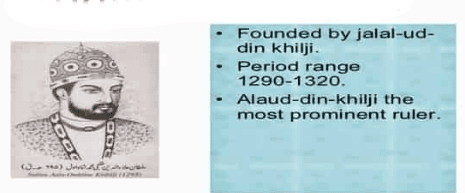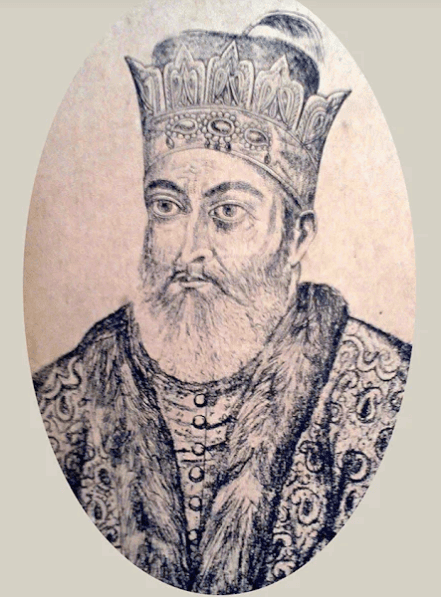UPSC Exam > UPSC Notes > History Optional for UPSC > The Khalji Revolution: Jalaluddin Khalji
The Khalji Revolution: Jalaluddin Khalji | History Optional for UPSC PDF Download
The Khalji Revolution

The Khalji Revolution (1290-1320):
- Marked the end of the Slave Dynasty and the rise of the Khalji Dynasty in the Delhi Sultanate.
- Signified not just a change in rulers but a fundamental shift in the nature of the state.
Background:
- After Balban’s death in 1286, Delhi experienced a power struggle.
- Balban’s chosen successor, Prince Mahmud, had died earlier. His other son, Bughra Khan, preferred to rule Bengal and Bihar.
- A young grandson of Balban was placed on the throne but lacked the experience to manage the situation.
- There was resentment against the Turkish nobles who monopolized high offices. Non-Turks, like the Khaljis, sought recognition.
- Jalaluddin Khalji, a Khalji noble, led a successful revolt against Balban’s successors in 1290.
- The Khalji rebellion was supported by non-Turkish nobles.
- The Khaljis, of mixed Turkish-Afghan origin, ended the Turkish monopoly of high offices.
Reasons for the Khalji Revolution:
- The Khaljis gained power through military strength, not noble or religious support.
- It was seen as a revolt of lower society against the established nobility.
- Khaljis, though of Turkish descent, were seen as Afghans due to their long residence in Afghanistan.
- Their success broadened the ruling class to include non-Turks and Indian Muslims.
- Historian Barani noted that the empire shifted from Turkish to Khalji control.
- The Khalji era introduced new administrative measures, such as market regulations and land revenue reforms.
- Khalji kingship centralized power in the Sultan, reducing the influence of religious leaders.
Negative Aspects:
- Emphasized militarism and expansion.
Jalaluddin Khalji (1290-1296)

Jalaluddin Khalji's Reign (1290-1296):
- Jalaluddin Khalji took the throne in 1290 after overthrowing Balban's ineffective successors.
- During his six-year reign, he faced various internal and external challenges.
Internal Conflicts:
- Some of Balban's officers rebelled against Jalaluddin's rule after he sidelined the nobility and commanders from the Mamluk dynasty.
- Jalaluddin responded by suppressing the revolt and executing certain commanders.
Military Campaigns:
- He attempted an unsuccessful expedition against Ranthambhor.
- Successfully repelled a Mongol invasion near the Sind River with the help of his nephew, Juna Khan (Alauddin Khilji).
Governance Approach:
- Jalaluddin adopted a liberal, humanitarian, and benevolent approach to governance.
- He tried to soften some of Balban's harsher policies and was inclusive, appointing Turks and officers from Balban's era to important positions.
- Even Malik Chhajju Kishli Khan, a relative of Balban, was given a significant post despite his rebellion.
Question for The Khalji Revolution: Jalaluddin KhaljiTry yourself: During Jalaluddin Khalji's reign, he adopted a liberal and inclusive approach to governance. What was one of the key aspects of his governance style?View Solution
Concept of State:
- He envisioned a state based on the goodwill and support of all communities, emphasizing welfare and beneficence.
- As the first Delhi Sultan to advocate for a state supported by its subjects, he recognized the majority Hindu population.
Treatment of Hindus:
- Despite being a devout Muslim, Jalaluddin allowed Hindus to practice their rituals, including idol worship, without interference.
- He did not endorse the Ulemas' demands for Hindu conversions and promoted a policy of tolerance.
Contrast with Balban:
- Unlike Balban, Jalaluddin did not equate sovereignty with tyranny or racial superiority.
- He believed in establishing government authority through goodwill rather than fear, aligning with true Islamic principles.
Expansionism and Legacy:
- Jalaluddin lacked the will and resources for large-scale expansionist efforts.
- His policies were viewed by some as weak, especially compared to his successor, Alauddin Khalji, who rejected Jalaluddin's liberal principles.
- Nonetheless, Jalaluddin's ideas had lasting significance and influenced many of his successors, marking his reign as historically important.
The document The Khalji Revolution: Jalaluddin Khalji | History Optional for UPSC is a part of the UPSC Course History Optional for UPSC.
All you need of UPSC at this link: UPSC
|
367 videos|995 docs
|
FAQs on The Khalji Revolution: Jalaluddin Khalji - History Optional for UPSC
| 1. What were the key reforms introduced by Jalaluddin Khalji during his reign? |  |
Ans. Jalaluddin Khalji introduced several key reforms aimed at strengthening the administration and military. He implemented a more centralized form of governance, reduced the power of local nobles, and established a system of price control to stabilize the economy. He also restructured the military to improve discipline and efficiency, allowing the Khalji dynasty to expand its territory effectively.
| 2. How did Jalaluddin Khalji's policies impact the socio-economic structure of India? |  |
Ans. Jalaluddin Khalji's policies significantly impacted the socio-economic structure by promoting trade and agriculture. His price control measures helped protect consumers from inflation, while his emphasis on market regulation fostered a stable economy. Additionally, his military campaigns increased revenue through the acquisition of new territories, further enhancing the economic conditions of the empire.
| 3. What were the military strategies employed by Jalaluddin Khalji to expand his empire? |  |
Ans. Jalaluddin Khalji employed innovative military strategies that included rapid cavalry movements and the use of surprise attacks. He organized his army into a well-coordinated force that could respond quickly to threats. His focus on maintaining a large standing army and utilizing intelligence for reconnaissance allowed him to effectively expand his empire and conquer significant territories.
| 4. How did Jalaluddin Khalji's reign contribute to the establishment of the Khalji dynasty? |  |
Ans. Jalaluddin Khalji's reign was crucial in establishing the Khalji dynasty as a formidable power in India. His successful military conquests, administrative reforms, and economic policies laid a strong foundation for his successors. By defeating rival kingdoms and consolidating power, he set the stage for the dynasty's dominance in the Indian subcontinent during the early 14th century.
| 5. What were the main challenges faced by Jalaluddin Khalji during his rule? |  |
Ans. Jalaluddin Khalji faced several challenges during his rule, including resistance from local rulers and internal dissent among the nobility. He had to contend with the threat of invasions from the Mongols, which required constant military vigilance. Additionally, managing the diverse populations within his empire posed challenges in maintaining stability and loyalty among his subjects.
Related Searches
















